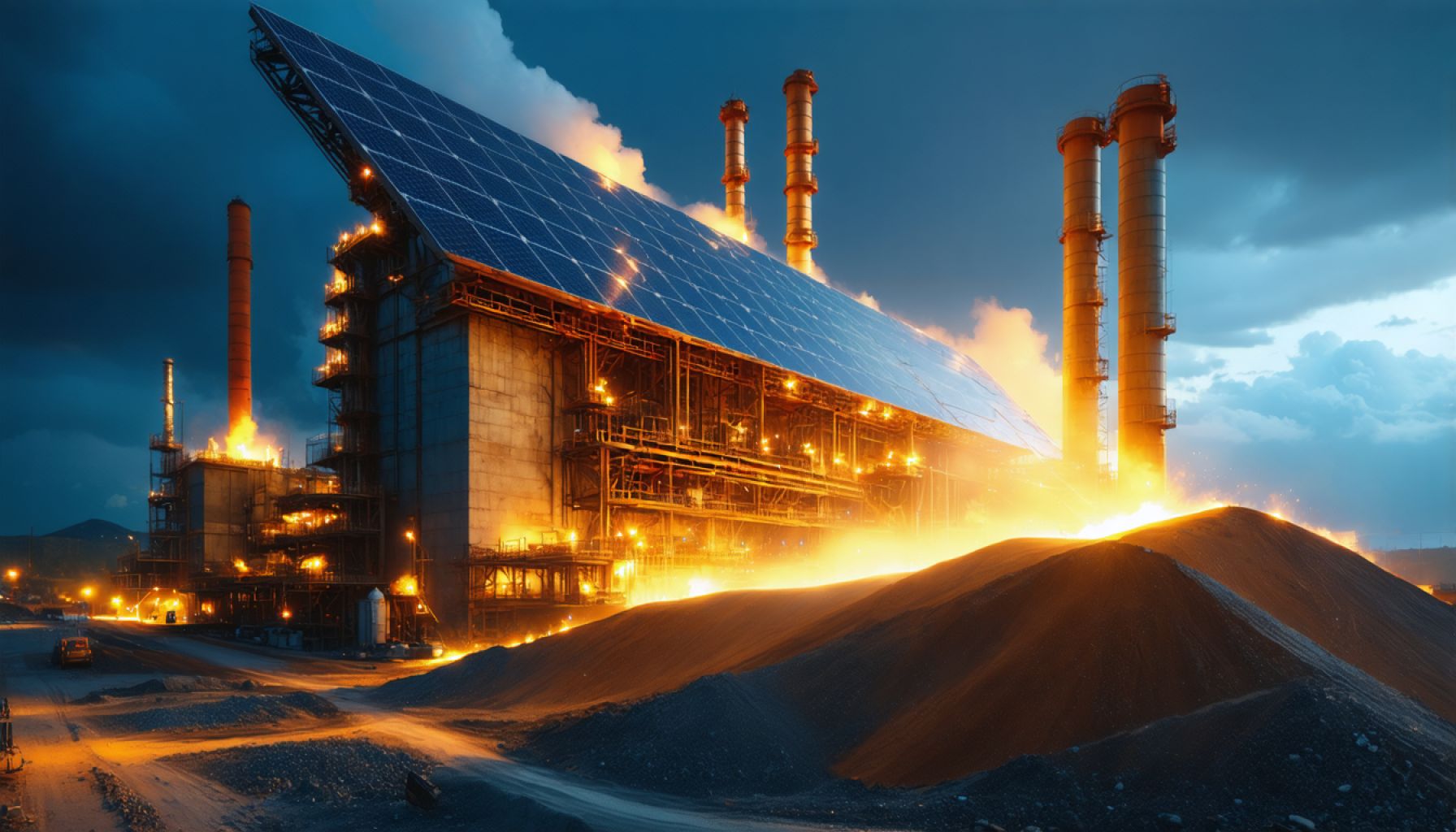- Tenaris has launched a 20-megawatt solar energy park in Romania to power its Quelerasi steel mill, marking a significant move towards sustainable steel production.
- The $21.5 million project, predominantly funded by Tenaris with support from the European Union, embodies a commitment to clean energy and reduced emissions.
- The park’s inauguration was attended by Romanian government and EU officials, highlighting the project’s strategic importance for regional sustainable development.
- Mihaela Popescu, Tenaris’ President in Eastern Europe, emphasizes the shift as part of a broader global decarbonization effort.
- Tenaris is also expanding green initiatives globally, including projects in Italy, China, and Argentina, reinforcing its vision for a sustainable industrial landscape.
- The project represents not just an operational shift but a transformational narrative towards balancing industrial growth with environmental stewardship.
Amidst the verdant plains of Romania, the shimmering expanse of photovoltaic panels heralds a dawn of eco-conscious steel production. In a bold fusion of industry and sustainability, international pipe manufacturer Tenaris has unveiled its first solar energy park in the country—a dazzling 20-megawatt facility set to partially power the tenacious furnaces of the Quelerasi steel mill.
Tenaris’ solar park stands as a beacon of the future, symbolizing a $21.5 million commitment to clean energy, where glinting solar panels stretch out like a modernist tapestry against the Romanian skyline. Propelled by the prospects of green energy, Tenaris has shouldered 70% of the investment, with the remaining support graciously extended by the European Union through its Recovery and Sustainability Plan—a financial bolstering that promises greener horizons across Europe.
The park’s inauguration was not a spectacle of chiming industry alone, but a gathering of influential minds. The ceremony drew representatives from the Romanian government, including the keen-eyed State Secretaries of the Ministry of Energy and Environment, as well as diplomatic figures from the Italian Embassy. Adding to the illustrious assemblage were local leaders, with the Mayor of Quelerasi, Marius Dulce, casting a hopeful gaze toward a future bound with clean energy.
In this orchestrated pivot toward sustainability, the voice of Mihaela Popescu, President of Tenaris in Eastern Europe, carries through the air with a note of unwavering resolve. With strategic insight, she underscores the move not merely as an operational shift but as a monumental stride in aligning with global decarbonization efforts. It is a resolute bid to reduce emissions, a testament to Tenaris’ unwavering commitment to lessening its environmental footprint.
Beyond Romanian borders, Tenaris’ green ambitions are echoed in other global projects—from solar expansions in Italy and China to burgeoning wind farms in the gusty terrains of Argentina. This strategic tapestry of renewable installations underscores Tenaris’ vision for a sustainable industrial landscape across continents.
The overarching message is resoundingly clear: as Tenaris innovates, its kiloton ferrous giants inch closer to a greener, cleaner tomorrow. In a world seeking balance between development and environmental stewardship, Tenaris forges a path others might soon choose to tread. The solar surge is not merely an operational necessity but a narrative of transformation, where industry wields its might in harmonious accord with the planet’s needs, delivering both pipes and promises of a sustainable future.
Revolutionizing Steel Production: Tenaris’ Solar Park and Its Impact on Global Sustainability
The newly inaugurated solar energy park by Tenaris in Romania marks a significant leap in sustainable steel production. As industries worldwide grapple with environmental challenges, this 20-megawatt facility serves as a compelling example of how renewable energy can be integrated into heavy manufacturing processes. Below, we explore further insights, potential implications, and lessons from this initiative.
How Does This Solar Park Influence Steel Production?
Steel production is traditionally an energy-intensive, carbon-heavy process. Introducing a solar energy park helps reduce reliance on fossil fuels, subsequently decreasing carbon emissions. The Quelerasi steel mill’s partial transition to solar power not only showcases an operational shift but steers Tenaris towards substantial environmental benefits—an alignment with global goals to minimize industrial carbon footprints.
Features and Specs of the Solar Park
– Capacity: 20 megawatts
– Investment: $21.5 million
– Location: Quelerasi, Romania
– Funding: 70% by Tenaris, 30% by the EU Recovery and Sustainability Plan
– Operational Goal: Partial power supply to the Quelerasi steel mill
Market Trends and Industry Insights
The integration of solar energy in manufacturing aligns with a broader market shift towards sustainable industrial processes. According to the International Energy Agency, the global solar PV industry is expected to continue its rapid growth, driven by declining costs and greater adoption across various sectors, including construction and manufacturing.
Security and Sustainability
Solar parks like Tenaris’ develop resilience against energy price fluctuations and ensure energy security. Additionally, reduced reliance on fossil fuels mitigates environmental risks associated with traditional energy sources.
Real-World Use Cases
Several global companies are following suit, blending renewables into their operations. Technologies such as wind, solar, and hydropower are increasingly utilized to transition towards net-zero emissions. For example, Tenaris is expanding similar initiatives in Italy, China, and Argentina, emphasizing a broad strategy of renewable adoption.
Controversies and Limitations
Despite the success, challenges remain—initial costs for setting up renewable infrastructure are high, and manufacturing requires substantial battery storage systems to handle inconsistencies in solar energy supply. However, ongoing technological advancements promise to mitigate these limitations.
Pro Tips for Implementation
1. Leverage Funding Options: Take advantage of government and EU funds focused on sustainability projects.
2. Assess Feasibility: Conduct comprehensive environmental and economic impact assessments before investments.
3. Scalable Solutions: Begin with partial implementation to monitor efficacy before full-scale projects.
Conclusion
Tenaris’ commitment to integrating solar energy into steel production represents a vital move toward industry sustainability. As companies increasingly aim for eco-friendly practices, they confront challenges of cost and infrastructure—with solutions emerging through innovations and collaborations. Organizations looking to follow similar paths should consider collaborative funding, phased integration, and ongoing evaluations of new technologies in the renewable sector.
By adopting these practices, companies not only contribute to environmental health but also position themselves as forward-thinking leaders in the global market.
